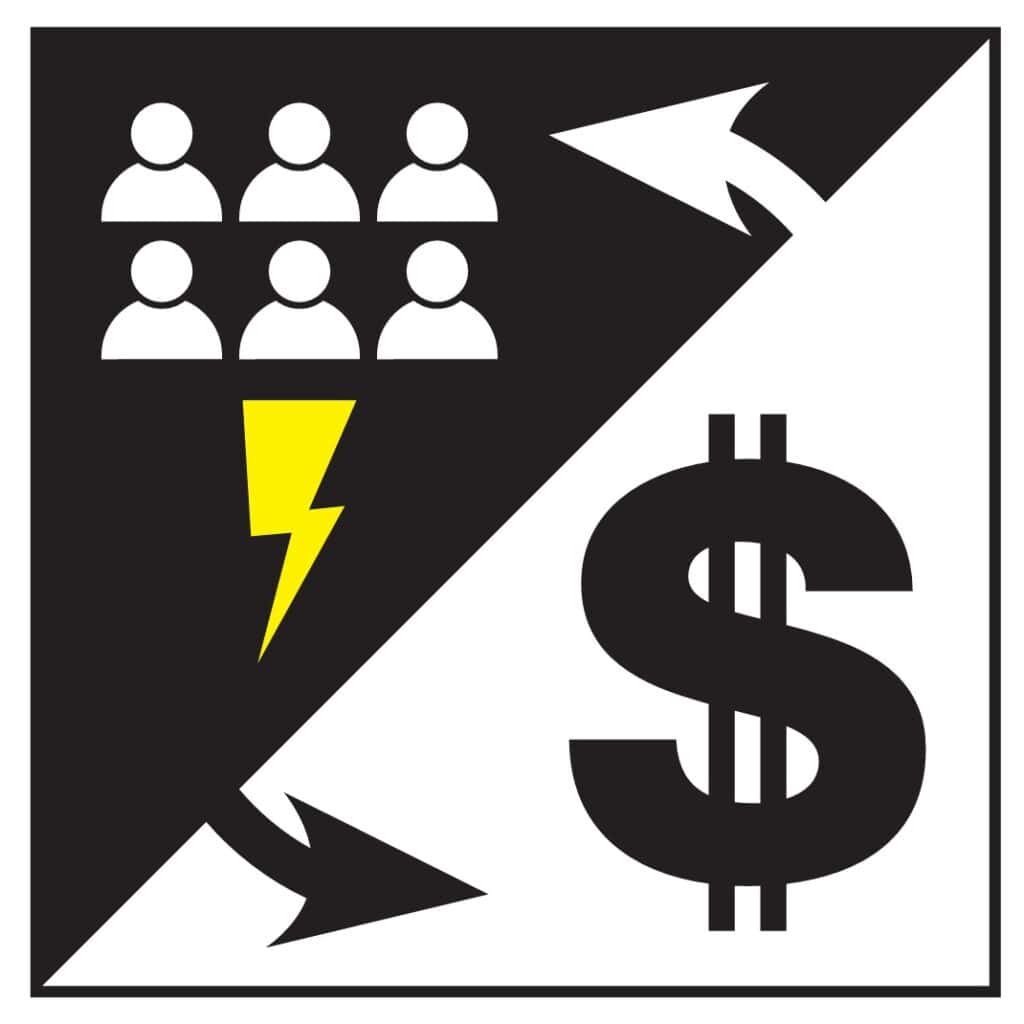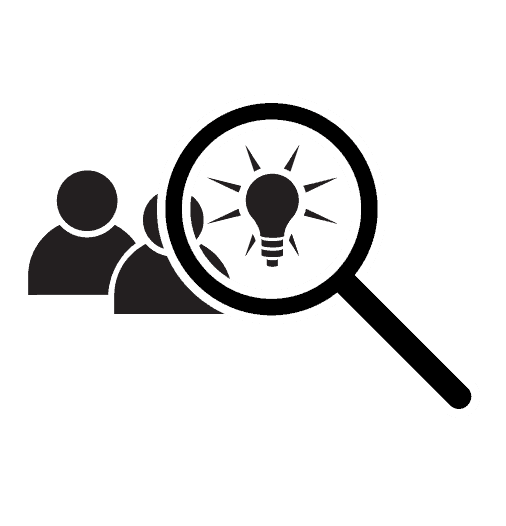McKinsey’s recent article, “Healthy Organizations Keep Winning, but the Rules Are Changing Fast,“ makes bold claims about the nature of organizational health. Yet, despite its ambition, the methodology it uses relies heavily on correlation without exploring the deeper causal mechanisms that drive success. For senior leaders in smaller businesses, startups, and nonprofits—those at the forefront of building resilient and innovative organizations—it’s essential to think beyond superficial patterns.
Let’s explore a better way to conceptualize organizational health that equips leaders to create sustainable growth in a rapidly evolving business environment.
The Problem with Correlation-Based Models
McKinsey’s approach starts with defining Organizational Health using outcome variables—financial performance, employee engagement, and customer satisfaction—and then measuring which organizational design variables correlate with those outcomes.
While patterns emerge, the issue is clear: McKinsey’s model uses the same criteria to define and measure the concept, creating a tautology. In other words, their analysis assumes what it seeks to prove. This approach is akin to a student writing their own test, taking it, and then celebrating their high score. It’s not an optimal way to understand what truly drives organizational health, especially in high-change, transformational environments.
So Where’s the Hypothesis?
What exactly is McKinsey proposing about organizational health? Their underlying premise seems to be that if organizations adopt certain familiar behavior patterns—such as leadership styles, decision-making approaches, and technical capabilities—more deeply and consistently, their overall health will improve. And not just for some businesses, but for all, across every context.
That’s what they seem to be hypothesizing. It’s a broad paintbrush. I’d argue overly broad. How so?
McKinsey is observing shifts in which of these behaviors most strongly correlate with their pre-determined measures of organizational health. The implication? These correlations hold true universally, for all organizations. Is that really true?
But here’s the problem—this approach feels a lot like p-hacking. What’s p-hacking? According to Statistics by Jim, it’s “the manipulation of data analysis until it produces statistically significant results.” Essentially, it’s sifting through massive amounts of data, tweaking variables until patterns appear significant—without a clear hypothesis for why those patterns exist in the first place. In other words, the very mechanism I keep coming back to—the ‘why’ behind the correlations—is missing.
Experts define p-hacking as collecting or selecting data and statistical analyses until previously insignificant results become significant. And let’s be honest—this happens a lot. When big-name firms declare something to be true, we often take it at face value. Social proof is a powerful force, and McKinsey knows how to wield it.
So, is McKinsey guilty of p-hacking? I can’t say for certain. What concerns me is the lack of a clear hypothesis about the mechanisms that actually drive organizational health. Without it, I remain skeptical.
The Crux of the Issue: No Explanatory Mechanism
What’s missing in McKinsey’s analysis is a deeper understanding of why these variables correlate with success. Without identifying the mechanisms that drive these correlations, their findings remain surface-level. It’s not enough to observe that resilient leadership or adaptive cultures are present in high-performing organizations. We must ask:
- Why are these variables present?
- What’s the order of effect?
- How do they interact to produce successful outcomes?
- Under what conditions do these variables fail to produce results?
This lack of explanatory rigor is a critical oversight. By failing to falsify their hypotheses or test alternative explanations, McKinsey risks overstating the significance of their findings. Demonstrating a causal effect requires rigorous answers to these questions and falsifying alternative explanations. Neither has occurred that I can see.
A Better Framework: People Energy → Economic Value

At its core, a business is the conversion of people energy into economic value. This framework provides a dynamic, testable, and actionable way to understand organizational health. Let’s break it down:
- Unleash and Harness People Energy
The energy people bring to work—their engagement, creativity, and commitment—is the fuel that drives productivity and innovation. Healthy organizations create systems to unlock and apply this energy effectively. - Align People Energy with Strategic Objectives
A disconnect between effort and organizational goals leads to wasted potential. Alignment ensures that people energy translates into measurable and meaningful outcomes, instead of entropy. - Iterate and Evolve Mechanisms for Conversion
Systems such as feedback loops, incentive structures, and communication patterns must continuously improve to ensure that people energy doesn’t stagnate or dissipate. We need ways to harness what we learn into greater and greater applied people energy.
This framework isn’t just a theory; it’s a testable mental model that leaders can apply and refine. And that’s a better way to start.
Why Measurement Matters
An apt critique of the people energy framework is its perceived difficulty in measurement. Unlike financial metrics, the ways in which people energy shows up– engagement, creativity, and alignment– may seem abstract. But measuring people energy is both feasible and vital.
Today’s tools, such as employee feedback platforms, behavioral analytics, and organizational network analysis, provide actionable insights into people energy dynamics. While perfect metrics may not exist, continuous improvement in measurement is both possible and necessary.
Moreover, the absence of precise measurement doesn’t invalidate the framework. It’s akin to the scientific principle that the absence of evidence is not evidence of absence. Leaders must embrace the iterative process of refining their metrics and methods to better understand and leverage people energy.
Applying the Framework in Complex Contexts
Business leaders operate in a complex, ever-changing environment. Unlike a complicated system where solutions can be derived through analysis, a business is a complex system where variables interact in unpredictable ways. David Snowden’s Cynefin framework is a great tool to explain how and why decision-making in a complex scenario is different from a complicated scenario.
Understanding Snowden’s Cynefin Framework
When it comes to making decisions, not all problems are created equal. That’s where Snowden’s Cynefin framework comes in—it helps leaders recognize what kind of problem they’re dealing with and how to approach it effectively. Cynefin (pronounced kuh-NEV-in) categorizes problems into different domains: clear, complicated, complex, and chaotic. Let’s focus on the difference between complicated and complex situations—because getting this distinction right can make or break your decision-making.
Complicated Problems: The Realm of Experts
In a complicated situation, things may be difficult to understand, but they’re ultimately solvable with the right expertise. That’s because complicated systems are closed systems that don’t interact with external, uncontrolled factors.
Think about fixing a car engine or designing a new piece of software. There are a lot of parts, but with enough knowledge, analysis, and expertise, you can figure out the best solution. This is where the Sense → Analyze → Respond approach works best.
- Sense: Gather information and assess the situation.
- Analyze: Apply expert knowledge to understand the relationships and determine the best course of action.
- Respond: Implement the solution with confidence.
In this space, experience, best practices, and standard operating procedures lead to reliable results. You can trust a tried-and-true approach because the environment is relatively stable and predictable. If the conditions aren’t contained and thoroughly definable as a closed system, you’ll run into unforeseen problems.
Complex Problems: The World of Uncertainty
Now, contrast that with complex problems—these are situations where there are many interdependent factors, and the relationships between them are constantly shifting. Think about managing a team through cultural change or responding to evolving market demands. There’s no clear cause-and-effect relationship, and attempting to analyze your way to the “perfect” solution can lead to analysis paralysis.
In complex situations, the variables both inside and outside of your control interact in unpredictable ways. This results in fluid conditions that will evolve and shift. So you can’t be sure what will work until you try.
The best way to go in these conditions is Probe → Sense → Respond.
- Probe: Take small, safe-to-fail actions to explore different possibilities.
- Sense: Observe how those actions affect the system.
- Respond: Double down on what works and discard what doesn’t.
This approach is essential because complex environments are open systems that are influenced by changes you make and changes that just seem to happen out of nowhere. You can’t apply a formula or lean solely on expertise—what worked yesterday may not work tomorrow. Instead, leaders must experiment, stay flexible, and iterate based on real-time feedback.
Why Understanding Complexity Matters for Your Business
Understanding whether you’re dealing with a complicated or complex problem is crucial because applying the wrong decision-making approach can waste time and resources—or worse, make things more chaotic. More off-purpose.
The takeaway? When facing complex challenges—like building a resilient culture, navigating market uncertainty, or any human-based endeavor—embrace experimentation. Try small things, learn from them, and adjust. When you’re dealing with something complicated—like implementing a new payroll system—lean on expertise and proven solutions. But many complex scenarios can first seem complicated if we don’t look closely enough.
Let’s say you have a complex matter to solve. Fight the temptation to treat complex situations like complicated ones. By recognizing the type of problem at hand, you can make smarter, more effective decisions that align with your organization’s goals.
The Unleash People EnergyⓇ Framework is Right for Complexity
The people energy framework aligns perfectly with this approach. Leaders can test hypotheses, measure outcomes, and refine their strategies in real time. For example:
- A tech startup might focus on unleashing creativity through cross-functional collaboration.
- A family-owned manufacturing business could prioritize engagement and retention to reduce turnover and improve operational efficiency.
By adapting the framework to their unique context, leaders can ensure it remains relevant and impactful. This approach is better than hoping the statistically derived patterns deemed best for all businesses work well for your particular situation.
Addressing Critiques of the Unleash People EnergyⓇ Framework
A new model can be harder to grasp than re-organizing familiar concepts. It can also understandably generate confusion, critiques, and consternation. Below, we address potential opposition to the positions in the model. The strongest cases an experienced executive or founder might make against it follow along with our counterpoint and an example to illustrate.
- “The Framework Sounds Too Simplistic”
Counterpoint: The Unleash People EnergyⓇ framework is a distilled approach that highlights the principles at work in any collaborative human effort. It doesn’t attempt to weigh each and every variable influencing an organization’s well-being. Instead, it equips the organization with the resilience to weather the inevitable bumps on the journey to fulfill its mission. Think of it as a navigational tool: it’s not a detailed map of every variable but a guiding principle for maximizing human potential in group settings.
Example: Imagine you’re learning to cook. You could focus on an endless list of specific techniques, regional styles, and obscure ingredients—or you could start with the fundamental principles of good cooking: balance, flavor, and technique. A master chef understands that these core principles provide a foundation that can adapt to different cuisines and challenges.
Similarly, the Unleash People EnergyⓇ framework provides a foundational approach that leaders can apply across various business challenges. It’s not about ignoring complexity but about focusing on the essential elements that drive sustainable success while leaving room for adaptability and growth.
- “Measuring People Energy Is Impractical”
Counterpoint: Today’s technology—from employee engagement surveys to collaboration analytics—offers numerous ways to track people energy. While not perfect, these tools provide a starting point for refinement and innovation. With emerging AI and tracking capabilities, future methods abound for robust and real-time measures of people energy.
Example: Below is a chart of various ways we can measure people energy today and in the near future. It’s probably not even comprehensive.
| Method | Current Tools & Techniques | Emerging Tools & Techniques |
| Employee Engagement Surveys | Gallup, Qualtrics, Officevibe – Pulse surveys for job satisfaction and motivation. | Research-based employee satisfaction surveys, and personalized engagement assessments. |
| Regular Pulse Checks | Custom-built polls using internal resources, or systems like Qualtrics. | AI-driven and real-time assessments. |
| Collaboration Analytics | Viva Insights, Slack Analytics – Tracks communication patterns and effectiveness. | AI-based interaction analysis via behavioral tracking. |
| Productivity Tracking | RescueTime, Hubstaff – Monitors work patterns and time management. | AI-powered work rhythm optimization tools. |
| Sentiment Analysis | Humu, Culture Amp – Analyzes written communication to gauge sentiment. | Real-time emotional AI analyzing tone and facial expressions. |
| Wellness & Resilience Tools | Virgin Pulse, Limeade – Tracks well-being, stress levels, and work-life balance. | Wearable technology tracking physical and cognitive states. |
| Wearable Technology | Fitbit, Apple Watch – Measures heart rate variability and activity levels. | Advanced biometric sensors for fatigue and engagement tracking. |
| Behavioral Analysis | AI language analysis from emails and chats. | Video-based AI assessing facial and vocal cues. |
| Digital Exhaust Analysis | Passive data collection from emails and calendars. | Comprehensive AI mapping of workflow efficiencies. |
| Neuroscience-Based Tools | Basic cognitive workload assessments. | EEG headbands and neurofeedback applications. |
| AR/VR Feedback | Immersive training simulations measuring engagement. | Real-time cognitive load and decision-making assessments. |
- “If Correlation Is Good Enough for McKinsey, It’s Good Enough for Me”
Counterpoint: Just because a Big Name Firm uses a method doesn’t mean it’s right for you. It’s a useful proxy to presume that the most well-known firms are more correct on balance than lesser-known firms, although this approach can often steer you wrong.
Remember that correlation offers initial insights but lacks explanatory power. Without understanding causation, organizations risk adopting strategies that fail in different contexts. The people energy framework provides a mechanism that leaders can test and refine.
Example: Imagine you’re shopping for running shoes. You could go with the biggest, most recognizable brand because, well, everyone else does. It feels like the safest bet. But what if your specific running style and foot shape require a more specialized shoe from a lesser-known brand that offers better support and performance—at a lower cost? Choosing the big name might feel reassuring, but it doesn’t necessarily mean it’s the best fit for you.
The same logic applies to business strategies. Just because McKinsey’s methods are used by Fortune 500 companies doesn’t mean they’re the right fit for your organization’s unique challenges. Relying solely on correlation-based insights can lead to costly missteps when the underlying mechanisms that drive success aren’t fully understood.
The Unleash People EnergyⓇ framework, on the other hand, provides a tailored, testable approach that allows leaders to experiment, measure, and refine strategies based on what actually works within their specific business context. By focusing on causation rather than surface-level correlations, you’re not just following the crowd—you’re finding the right solution for your organization’s success.
- “Sounds Too Complicated to Implement”
Counterpoint: Testing and falsifying hypotheses doesn’t have to delay action. Safe-to-fail experiments allow leaders to refine their approaches while maintaining momentum. In fact, the probe-sense-respond method is great for rapid starts because we leverage safe-to-fail experiments in place of complex, time-intensive waterfall method interventions.
Example: At Performentor, we have a quick and insightful way to get started applying the Unleash People EnergyⓇ framework with our People Energy Audit. This brief assessment helps you identify the bottlenecks in your firm’s unleash people energy mechanisms.
Brief Explainer Video About the People Energy Audit
- “It Feels Too Abstract or Woo Woo”
Counterpoint: Leaders already talk about “energy in the room” or “energy vampires”; this framework formalizes those instincts into actionable strategies. Even though we aren’t yet accustomed to putting those two words together this way—people energy—we already know what it means and we know it viscerally.
The concept of people energy is grounded in observable behaviors that we can also feel—engagement, alignment, and outcomes—making it practical, emotionally legitimate, and measurable.
Example: Think about when you walk into a room before an important meeting. Without anyone saying a word, you can feel the energy—whether it’s excitement, tension, or disengagement. Maybe there’s an electric buzz because a major win was just announced, or perhaps the room feels drained after weeks of uncertainty. No one needs to explain it; you just know.
This intuitive understanding of energy isn’t “woo woo”—it’s a real, observable phenomenon that impacts how work gets done. Leaders often describe employees as “fired up” or “burnt out,” and these aren’t just casual phrases. They reflect the underlying engagement, motivation, and alignment of their teams—key elements of the Unleash People EnergyⓇ framework.
Take sports teams as another example. A coach doesn’t just focus on skill and strategy; they also pay close attention to team morale and chemistry. If the “energy” isn’t right—if players aren’t aligned, motivated, or connected—performance suffers, no matter how talented they are. Businesses are no different. The framework helps leaders pinpoint and adjust these dynamics in real, measurable ways—ensuring their teams are not just present, but fully engaged and contributing at their best.
So while “people energy” might sound like a new phrase, it’s something we all recognize and respond to daily. The Unleash People EnergyⓇ framework simply provides the structure to harness it intentionally, helping leaders turn instinct into action.
A Call to Action
The world of work is changing, and so must our frameworks for understanding organizational health. The people energy framework challenges leaders to think differently about their businesses and their teams. It invites experimentation, measurement, and continuous improvement.
Test it in your organization:
- Measure people energy.
- Align it with strategic objectives.
- Refine your systems to optimize the conversion of energy into value.

By embracing this approach, you can build an organization that not only survives but thrives in a rapidly evolving world. Let’s unleash the full potential of our people and create extraordinary results.

